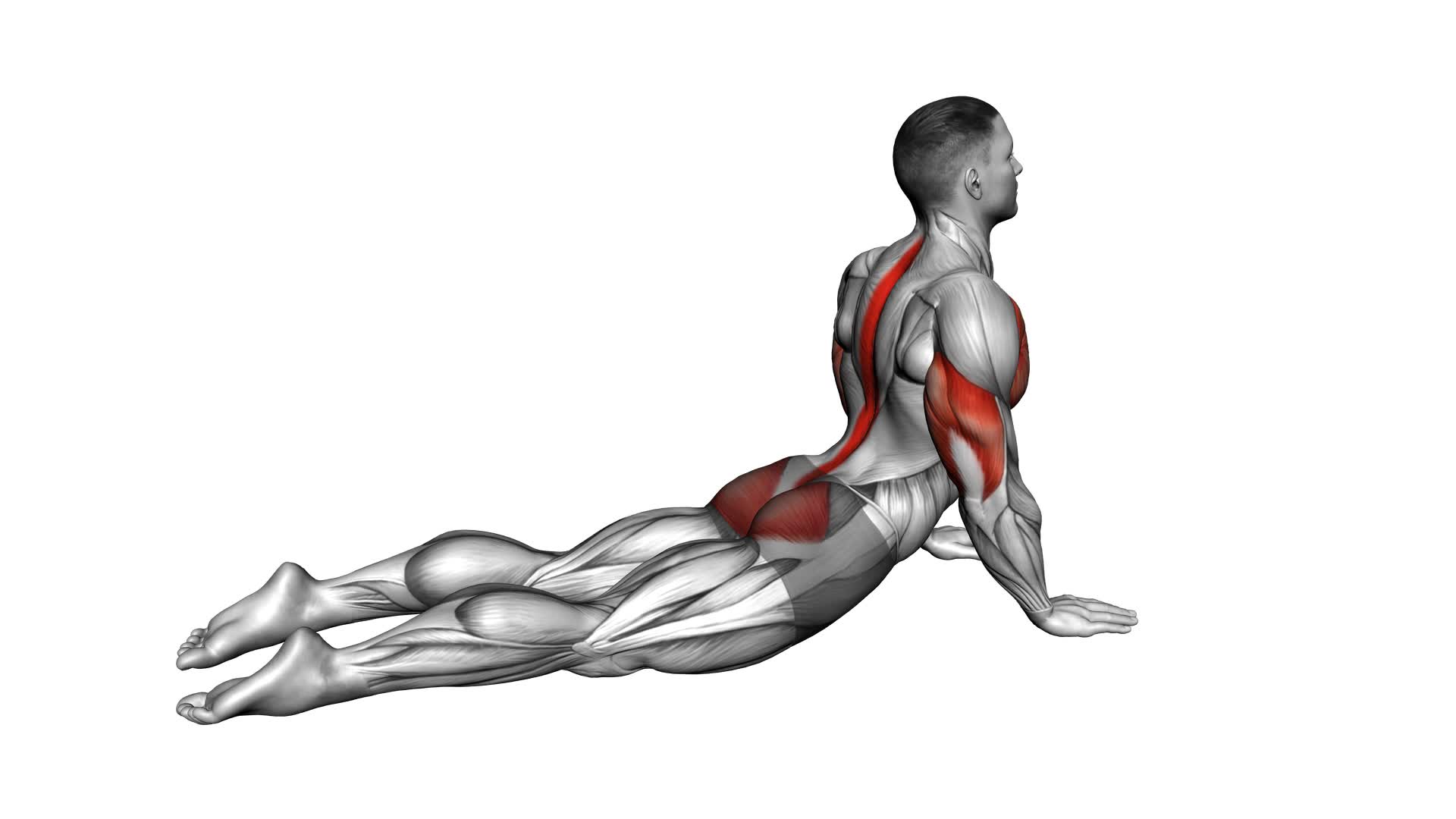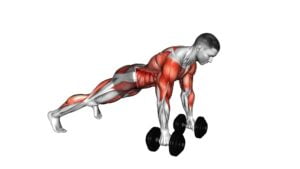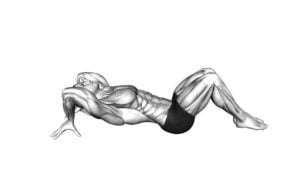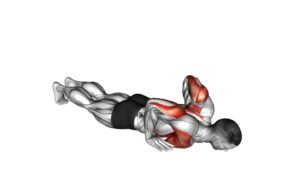Seal Push-up – Video Exercise Guide & Tips

Looking to strengthen your upper body and improve your core stability? The Seal Push-up is the perfect exercise for you! In this video exercise guide, we'll show you the proper form and technique to maximize your results.
Watch This Exercise Video
Whether you're a beginner or an advanced fitness enthusiast, we've got you covered with modifications for different fitness levels. Plus, we'll share valuable tips on increasing the difficulty and incorporating Seal Push-ups into your workout routine.
Get ready to take your fitness to the next level!
Key Takeaways
- The Seal Push-up targets multiple muscle groups and builds upper body strength.
- Proper form and technique, including maintaining alignment and posture, focusing on breathing and engaging core muscles, and gradually increasing intensity, are important for performing the Seal Push-up correctly.
- Alignment and posture are crucial in the Seal Push-up, with the body being kept in a straight line and avoiding sagging hips or arching the lower back.
- Breathing deeply and engaging the core muscles during the Seal Push-up helps improve stability and balance, enhances performance, and develops a strong foundation.
Benefits of the Seal Push-up
Improve your upper body strength and flexibility with the Seal Push-up, a dynamic exercise that targets multiple muscle groups. The Seal Push-up is an effective way to build strength in your chest, shoulders, triceps, and core. By performing this exercise, you can improve your overall upper body strength and increase muscle definition.
One of the primary benefits of the Seal Push-up is its ability to target multiple muscle groups simultaneously. Unlike traditional push-ups that primarily focus on the chest and triceps, the Seal Push-up engages the shoulders and core as well. This means that you can work multiple muscle groups in one exercise, saving you time and maximizing your workout efficiency.
Additionally, the Seal Push-up helps to improve your flexibility. As you lower your body towards the ground, you'll feel a stretch in your chest, shoulders, and upper back. This stretching action helps to increase flexibility in these areas, allowing for a greater range of motion during other exercises and daily activities.
Incorporating the Seal Push-up into your workout routine is a great way to target multiple muscle groups while improving your upper body strength and flexibility. Remember to maintain proper form throughout the exercise and gradually increase the intensity as you become more comfortable.
Proper Form and Technique
To perform a seal push-up with proper form and technique, there are a few key points to keep in mind.
First, focus on maintaining proper alignment and posture throughout the movement, keeping your body in a straight line from head to heels.
Next, pay attention to your breathing and engage your core muscles to maintain stability and control.
Lastly, if you're a beginner, don't be afraid to modify the exercise by performing it on your knees or using an elevated surface for support.
Alignment and Posture
Maintain proper alignment and posture during the seal push-up by engaging your core and keeping your body in a straight line. This is crucial for improving flexibility and shoulder stability while performing the exercise.
Here are some tips to help you achieve the correct alignment and posture:
- Start by lying face down on the floor with your hands placed directly under your shoulders.
- Keep your legs extended and toes pointed, with your feet together.
- Engage your core muscles by drawing your belly button towards your spine.
- As you push yourself up, make sure to keep your body in a straight line from your head to your heels.
- Avoid sagging your hips or arching your lower back.
- Lower yourself back down with control, maintaining the same straight line alignment throughout the movement.
Breathing and Core Engagement
Achieve optimal results in the seal push-up by focusing on proper breathing and engaging your core muscles.
Breathing techniques play a crucial role in any exercise, including the seal push-up. As you lower your body towards the ground, inhale deeply through your nose, filling your lungs with air. This helps stabilize your core and maintain proper form.
As you push yourself back up, exhale forcefully through your mouth. This controlled exhale contracts your abdominal muscles, further engaging your core and increasing the effectiveness of the exercise.
Strengthening the core is essential for overall stability and balance. By consciously engaging your core during the seal push-up, you not only enhance your performance but also develop a strong foundation for other exercises and daily activities.
Modifications for Beginners
Engage your core and focus on maintaining proper form and technique when modifying the seal push-up for beginners. Here are some beginner modifications and alternative exercises to help you build strength and confidence:
- Knee push-ups: Start on your hands and knees, with your hands slightly wider than shoulder-width apart. Lower your chest towards the ground, keeping your elbows close to your body. Push back up to the starting position.
- Wall push-ups: Stand facing a wall and place your hands on the wall at shoulder height. Take a step back and lean into the wall, bending your elbows to lower your chest towards the wall. Push away from the wall to return to the starting position.
- Incline push-ups: Find an elevated surface, like a bench or step, and place your hands on it at shoulder height. Lower your chest towards the surface, keeping your elbows close to your body. Push back up to the starting position.
Remember to listen to your body and progress at your own pace. As you gain strength, you can gradually increase the difficulty of the exercise.
Common Mistakes to Avoid
To avoid common mistakes while performing seal push-ups, be sure to keep your hips lifted throughout the exercise. One of the most common mistakes people make is allowing their hips to sag or drop, which can lead to improper technique and muscle imbalances.
When your hips are lifted, you engage your core muscles more effectively, ensuring that you maintain a straight line from your head to your heels. This alignment is crucial for targeting the right muscles and avoiding unnecessary strain on your lower back.
Another mistake to avoid is rushing through the exercise. Take your time and focus on the quality of your movements. Ensure that you lower your body down with control and push back up using your chest and triceps muscles. By going too fast, you risk compromising your form and not getting the full benefit from the exercise.
Lastly, be mindful of your hand placement. Keep your hands directly under your shoulders and spread your fingers wide for stability. This will help distribute your weight evenly and provide a strong foundation for the movement.
Modifications for Different Fitness Levels
To modify seal push-ups for different fitness levels, you can adjust the difficulty by changing the placement of your hands or the angle of your body. Here are some modifications you can try:
- Beginner Modifications:
- Place your hands slightly wider than shoulder-width apart to provide more stability.
- Keep your knees on the ground instead of extending your legs, which will reduce the amount of weight you have to push.
- Start with a smaller range of motion by lowering your chest only a few inches from the ground.
- Advanced Modifications:
- Bring your hands closer together, directly under your chest, to increase the challenge on your upper body.
- Lift one leg off the ground while performing the push-up to engage your core and increase the intensity.
- Elevate your feet on a step or bench to further engage your shoulders, chest, and triceps.
Remember to listen to your body and choose modifications that best suit your fitness level. As you become more comfortable with the exercise, you can gradually increase the difficulty by implementing the advanced modifications.
Tips for Increasing Difficulty
To make the seal push-up more challenging, you can ramp up the intensity by incorporating these tips.
There are several progression options and advanced variations you can try to increase the difficulty of this exercise.
One way to make the seal push-up more challenging is by elevating your feet. Place your feet on an elevated surface, such as a bench or step. This will increase the amount of weight you have to push up and engage your upper body muscles even more.
Another option is to add a clap between each rep. As you push yourself up, explode off the ground and clap your hands together before landing back in the starting position. This explosive movement won't only challenge your upper body strength but also improve your power and agility.
You can also try performing the seal push-up on one arm. This variation requires a lot of stability and strength, as you'll be supporting your entire bodyweight with just one arm. Start by placing one hand on the ground and extending the other arm out to the side. Lower your body down and push yourself back up using only one arm.
By incorporating these progression options and advanced variations into your seal push-up routine, you can continue to challenge yourself and see improvements in your strength and fitness level.
Remember to always listen to your body and progress at a pace that's appropriate for you.
Incorporating Seal Push-Ups Into Your Workout Routine
To incorporate seal push-ups into your workout routine, you can start by adding them as a challenging upper body exercise option. Seal push-ups offer a unique variation of the traditional push-up, targeting your chest, shoulders, triceps, and core muscles. Here are three ways you can incorporate seal push-ups into your routine:
- Begin with a warm-up: Before attempting seal push-ups, make sure to warm up your upper body with some dynamic stretches and light cardio exercises. This will help prevent injuries and prepare your muscles for the workout ahead.
- Start with modified seal push-ups: If you're new to seal push-ups or still building strength, you can start with modified versions. One option is to perform the exercise on your knees instead of your toes. This reduces the amount of body weight you're pushing, making it easier to maintain proper form.
- Add seal push-ups to full body workouts: To maximize the benefits of seal push-ups, incorporate them into your full body workout routines. This ensures that you're not neglecting other muscle groups and promotes overall strength and balance.
Frequently Asked Questions
How Many Calories Does the Seal Push-Up Burn?
Seal push-ups are a challenging exercise that can help you burn calories and strengthen your upper body.
While the exact number of calories burned during a seal push-up can vary depending on factors such as your weight and intensity level, it's generally considered to be an effective calorie-burning exercise.
In addition to burning calories, seal push-ups also offer benefits such as improved core strength and shoulder stability.
Incorporating seal push-ups into your workout routine can add variety and intensity to your workouts.
Can the Seal Push-Up Help Improve Posture?
The seal push-up is an effective exercise for improving your posture. By incorporating seal push-up variations into your workout routine, you can target different muscles in your upper body, including your chest, shoulders, and core.
This exercise helps strengthen these muscles, which can in turn help improve your posture. By regularly performing seal push-ups, you can develop better upper body strength and achieve a more upright and confident posture.
Are There Any Specific Muscles Targeted by the Seal Push-Up?
When performing the seal push-up, there are specific muscle groups that are targeted. This exercise primarily works your chest muscles, including the pectoralis major and minor. Additionally, it engages your triceps, shoulders, and core muscles.
To make the most out of the seal push-up, you can try variations and modifications such as changing the width of your hand placement or adding resistance bands. These variations help target different areas and increase the intensity of the exercise.
Can the Seal Push-Up Be Done by Beginners?
Yes, the seal push-up can be done by beginners. It's a great exercise for beginners as it targets multiple muscles, including the chest, shoulders, triceps, and core.
The seal push-up also helps improve upper body strength and stability. If you're a beginner, you can modify the exercise by starting on your knees instead of your toes. This will make it easier to perform the movement and gradually build up your strength.
How Often Should the Seal Push-Up Be Performed for Optimal Results?
To achieve optimal results, it's important to perform seal push-ups regularly.
Varying your seal push-up variations can help target different muscle groups and prevent plateaus.
Start with proper form for seal push-ups, ensuring your hands are placed slightly wider than shoulder-width apart and your body is in a straight line.
Aim for at least three to four sets of seal push-ups per week, allowing for proper rest and recovery between sessions.
Conclusion
Incorporating seal push-ups into your workout routine can provide numerous benefits for your upper body strength and core stability. By following the proper form and technique, you can maximize the effectiveness of this exercise.
Avoid common mistakes and modify the exercise based on your fitness level to ensure safety and progress. Don't be afraid to challenge yourself by increasing the difficulty level.
Incorporating seal push-ups into your regular workout routine for optimal results.

Author
Years ago, the spark of my life’s passion ignited in my mind the moment I stepped into the local gym for the first time. The inaugural bead of perspiration, the initial endeavor, the very first surge of endorphins, and a sense of pride that washed over me post-workout marked the beginning of my deep-seated interest in strength sports, fitness, and sports nutrition. This very curiosity blossomed rapidly into a profound fascination, propelling me to earn a Master’s degree in Physical Education from the Academy of Physical Education in Krakow, followed by a Sports Manager diploma from the Jagiellonian University. My journey of growth led me to gain more specialized qualifications, such as being a certified personal trainer with a focus on sports dietetics, a lifeguard, and an instructor for wellness and corrective gymnastics. Theoretical knowledge paired seamlessly with practical experience, reinforcing my belief that the transformation of individuals under my guidance was also a reflection of my personal growth. This belief holds true even today. Each day, I strive to push the boundaries and explore new realms. These realms gently elevate me to greater heights. The unique combination of passion for my field and the continuous quest for growth fuels my drive to break new ground.







